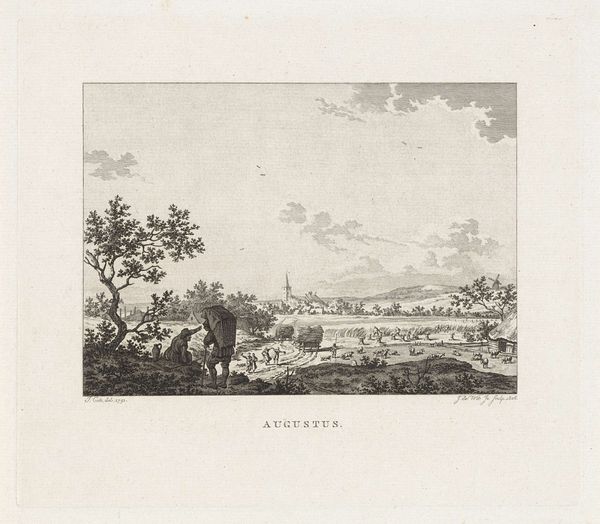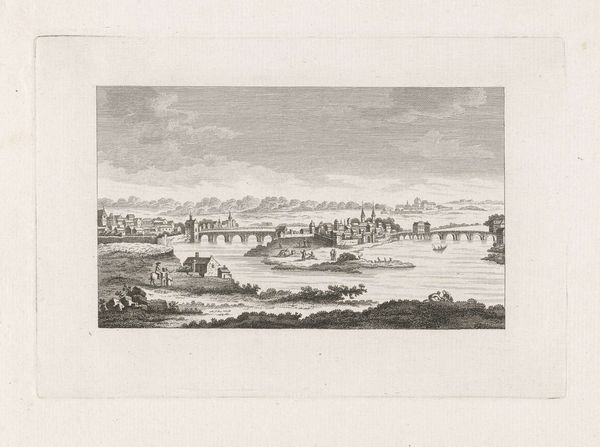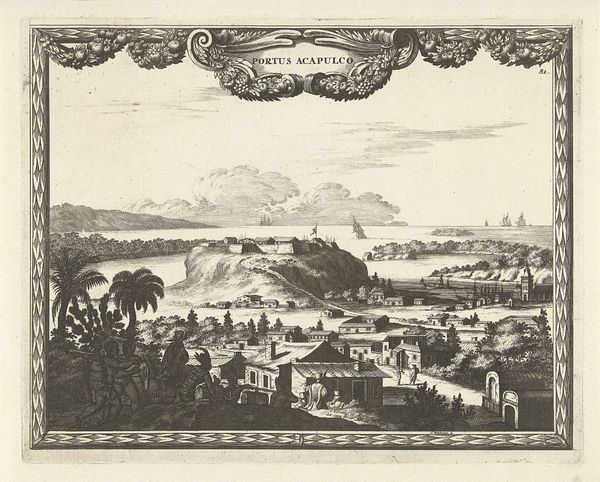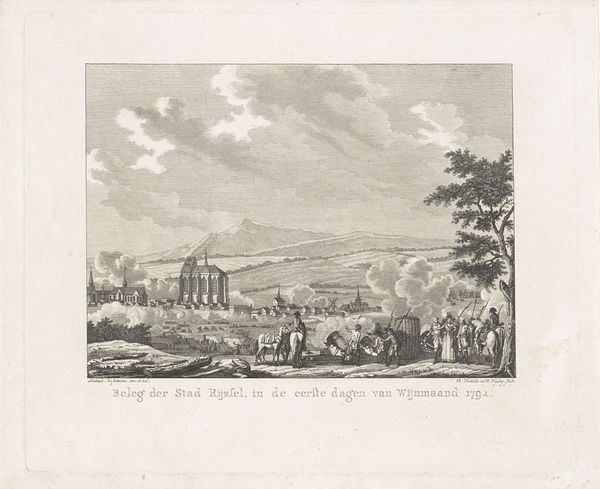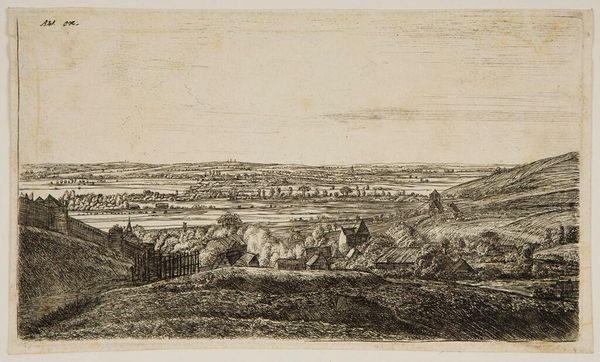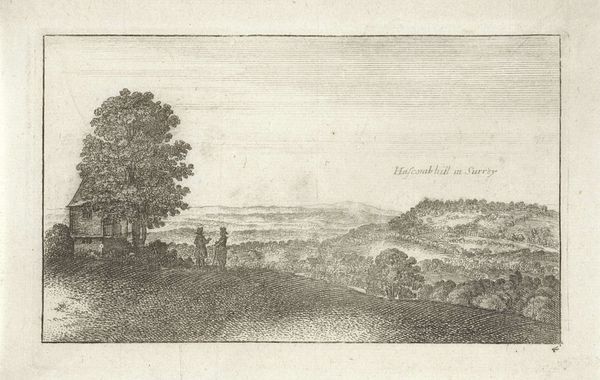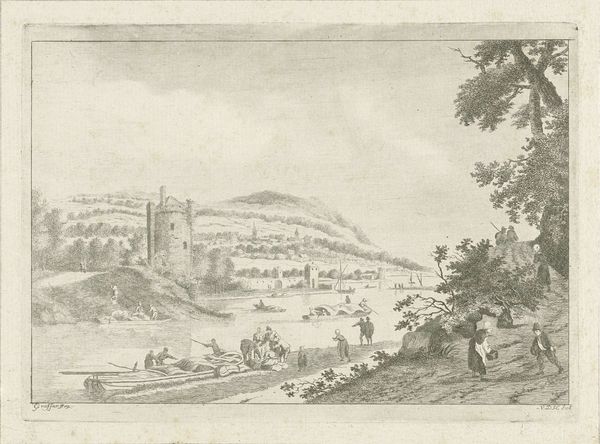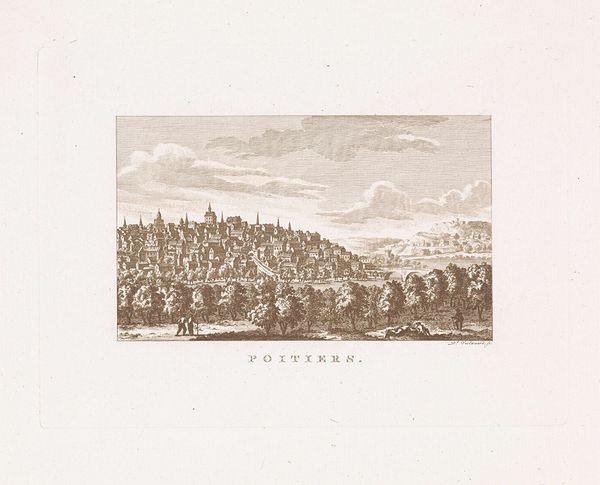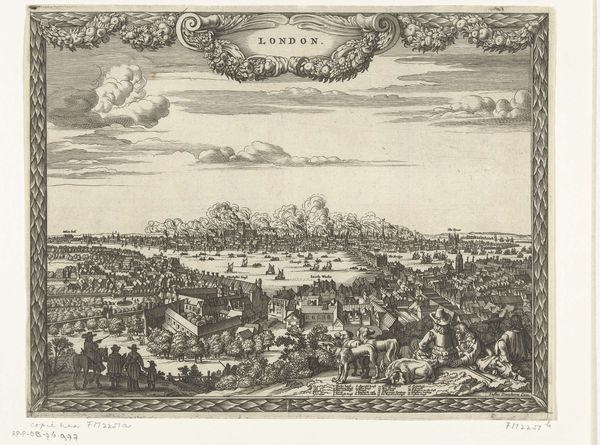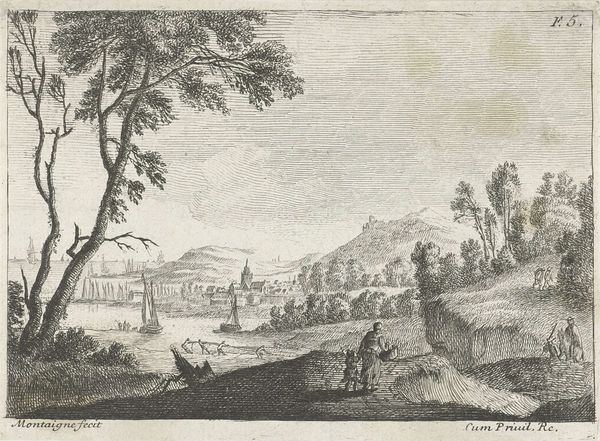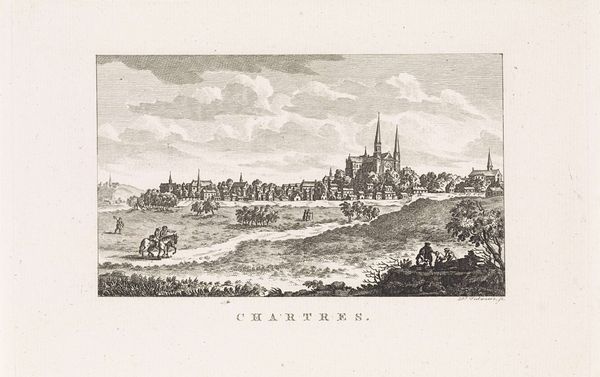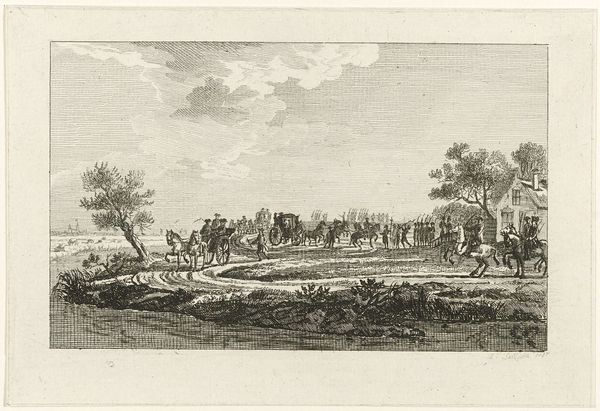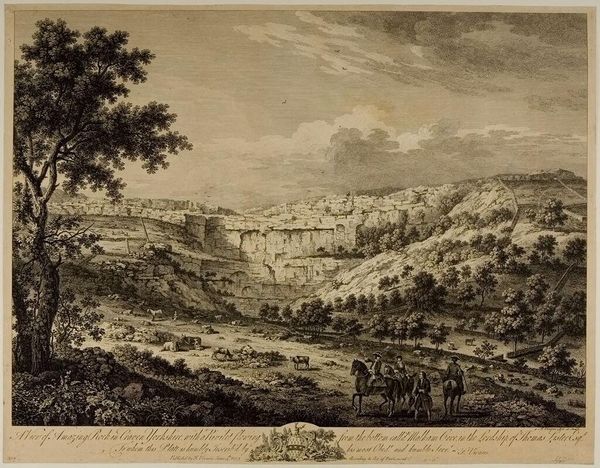
print, engraving
#
pencil drawn
#
light pencil work
# print
#
pencil sketch
#
light coloured
#
landscape
#
pencil drawing
#
cityscape
#
pencil work
#
engraving
#
realism
Dimensions: height 154 mm, width 210 mm
Copyright: Rijks Museum: Open Domain
Curator: This is "Gezicht op Meursault," an engraving dating from around 1776-1851, attributed to Daniël (I) Veelwaard. It’s currently held here at the Rijksmuseum. Editor: It's a tranquil scene, wouldn't you say? Gentle, almost faded sepia tones create a very placid atmosphere. The scale feels intimate, like a carefully observed diary entry. Curator: I think "diary entry" is an interesting choice. Consider the political landscape of that period. Visual representations, even ostensibly simple landscapes, became assertions of national identity and property. How might the depiction of Meursault reflect contemporary social and economic anxieties? Editor: Hmm, the clustering of the buildings certainly projects a sense of community and protection, and also serves as an important image of home. Those little houses offer the promise of hearth and stability and also security in belonging to the church with its tower in the centre. What does it tell us about how people at that time were perceiving these simple iconographies of stability in a time of great turmoil? Curator: I find your focus on the symbolic "promise" of the village quite astute. I’m prompted to consider that engravings like these were made available for a broad section of the population. What messages were the rulers trying to promote through mass production? The location itself could represent resources controlled or desired by the authorities. Editor: So, what seems bucolic and peaceful to my modern eye may carry more fraught weight tied to power, ownership, and perhaps even implicit class structures. That line of trees like uniformed sentinels adds to that interpretation for me too, somehow. Curator: Precisely! It pushes back against the picturesque; it demands critical engagement with the political landscape embedded within. It also provides historical continuity of meaning – are we simply carrying meaning, or evolving with time? Editor: It forces me to reconsider how readily I impose my own symbolic framework. It also highlights just how resonant and multifaceted an image can be. Curator: Indeed. It serves as a reminder that visual interpretation is never neutral. The work is in constantly engaging with what symbols persist from the artist's time to ours.
Comments
No comments
Be the first to comment and join the conversation on the ultimate creative platform.
